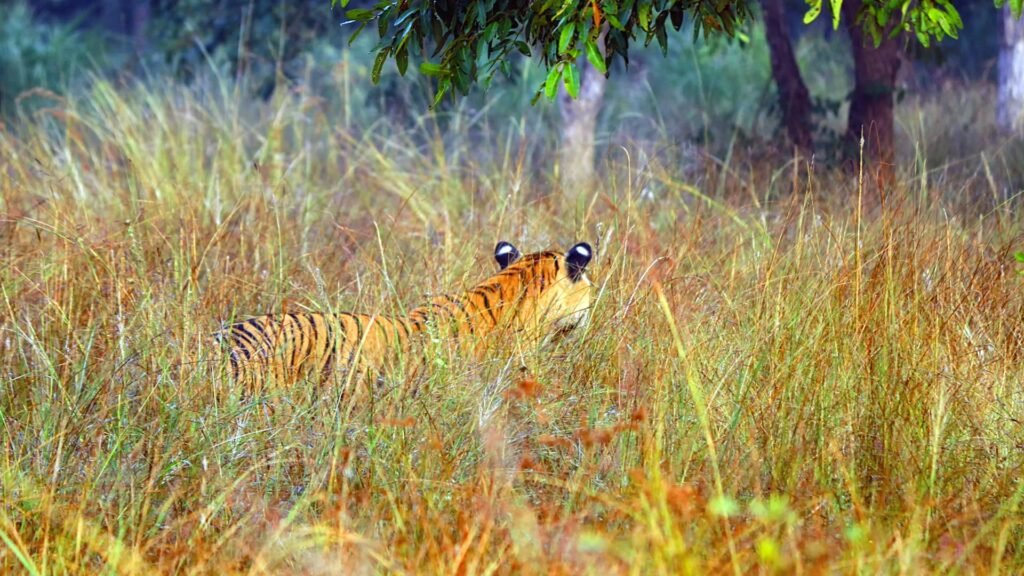WILDLIFE IN UTTARAKHAND
Uttarakhand, meaning ‘the land in the north,’ formerly known as Uttaranchal, is often referred to as “Devbhumi’ or the ‘Land of the Gods’ since it has many holy places for pilgrims to travel to. It borders the Sudurpaschim Pradesh in Nepal to the east, Tibet Autonomous Region of China to the north, the Indian states of Himachal Pradesh to the west and northwest, and Uttar Pradesh to the south.
The state contains forested and mountainous regions protected from harmful human intervention with the sole purpose of protecting and conserving the natural environment and its wildlife. About 86% of the area is mountainous, and 65% is forested. The northern portion is covered with glaciers and high Himalayan peaks. The National Parks in the state are the Jim Corbett National Park, the Gangotri National Park, the Govind National Park, the Nanda Devi National Park, the Rajaji National Park, and the Valley of Flowers National Park.
The Jim Corbett National Park, one of the first National Park established in India, is also the first National Park and Wildlife Sanctuary to come under Project Tiger for the protection of Bengal Tigers. The Gangotri National Park is the place of origin of the Holy River Ganges, which rises from a glacier called the Gomukh glacier. The Govind National Park is a Snow Leopard Reserve, categorized under the Snow Leopard Project of the Indian government. The forest department has put in major efforts to protect the Snow Leopards and conserve their natural habitat. It is also one of the important places where the Bearded Vulture is protected. The Rajaji National Park was established merging three Wildlife Sanctuaries, namely, the Chilla Wildlife Sanctuary, the Rajaji Wildlife Sanctuary, and the Motichur Wildlife Sanctuary.
The Nanda Devi National Park is a part of the Nanda Devi Biosphere Reserve. The Nanda Devi Biosphere Reserve holds a very crucial and important environment for all its inhabitants since there is no other like it, and the wildlife here cannot survive in any other environment. The Valley of Flowers National Park, popular for the amazing varieties of flowers, and colorful fauna, is also regarded as the second core zone of the Nanda Devi Biosphere Reserve, after the Nanda Devi National Park. The park is also recognized as a World Heritage Site by UNESCO.
The State Animal is the Alpine Musk Deer, and the State Bird is the Himalayan Monal. The State Flower is the sacred and holy Brahma Kamal, whereas the State Tree is the Burans, which is a type of a Rhododendron.
Uttarakhand is known for its natural and scenic beauty. The Great Himalayas with the Bhabar and the Terai tracts, the panoramic views from mountain tops, and the peace of the valleys, with the chill air from the north, is a heavenly experience that every nature lover craves.Major Wildlife Destinations
| Sr. No. | National Park | Year of Establishment | Area (km2) |
| 1 | Corbett | 1936 | 520.82 |
| 2 | Gangotri | 1989 | 2390.02 |
| 3 | Govind | 1990 | 472.08 |
| 4 | Nanda Devi | 1982 | 624.6 |
| 5 | Rajaji | 1983 | 820 |
| 6 | Valley of Flowers | 1982 | 87.5 |
| Sr. No. | Wildlife Sanctuary | Year of Establishment | Area (km2) |
| 1 | Askot | 1986 | 600 |
| 2 | Binsar | 1988 | 47.07 |
| 3 | Govind Pashu Vihar | 1955 | 485.89 |
| 4 | Kedarnath | 1972 | 975.2 |
| 5 | Mussoorie | 1993 | 10.82 |
| 6 | Nandhaur | 2012 | 269.96 |
| 7 | Sonanadi | 1987 | 301.18 |
Source: National Wildlife Database, Wildlife Institute of India
| Sr. No. | Conservation Center/ Protected Area | Year of Establishment | Area (km2) |
| 1 | Asan Wetland | 2005 | 4.44 |
| 2 | Jhilmil Jheel | 2005 | 37.84 |
| 3 | Naina Devi Himalayan Bird | 2015 | 111.92 |


